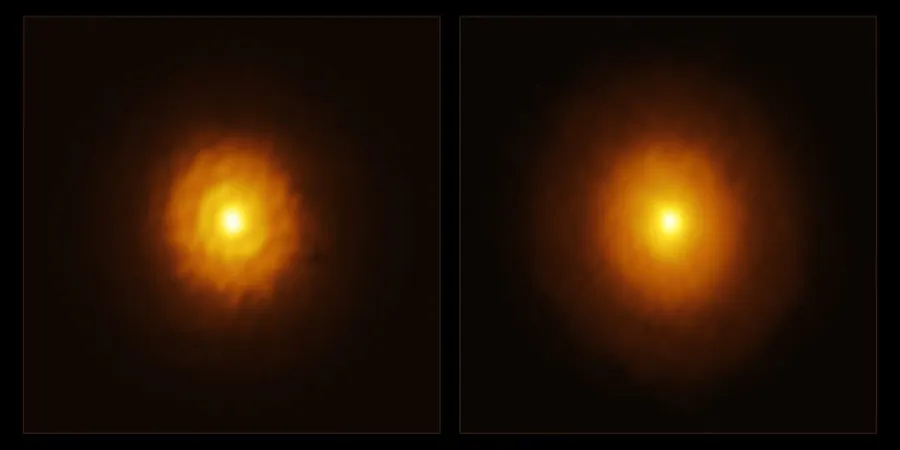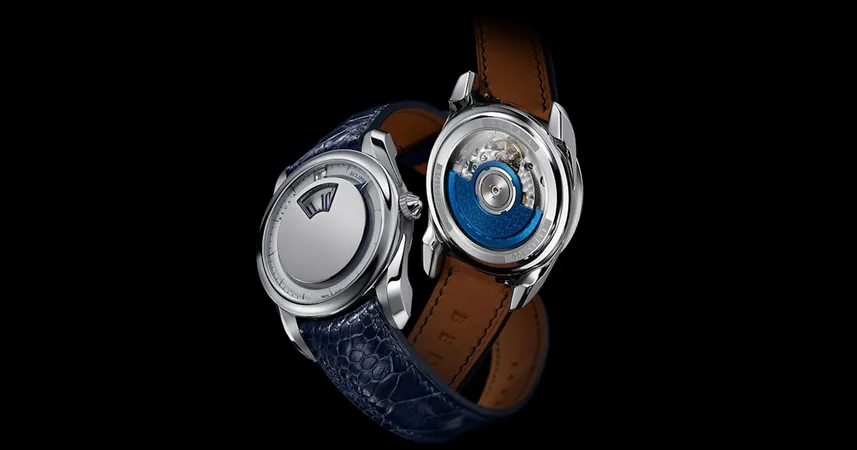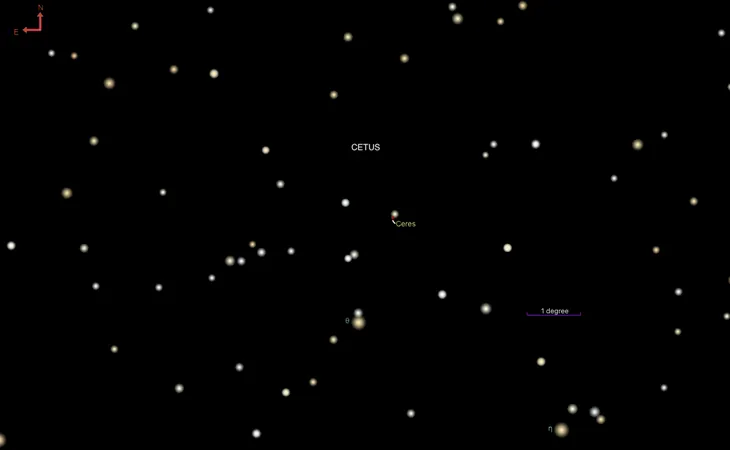
Astronomers Uncover Massive Exoplanet in Star's 'Fog': A Groundbreaking Discovery!
2025-07-14
Author: John Tan
In an exciting twist in the quest to find distant worlds, astronomers have unveiled the existence of a gigantic exoplanet, potentially three to ten times the size of Jupiter, mysteriously lurking within a swirling disk of gas and dust that envelops a young star known as MP Mus.
Earlier studies had suggested that MP Mus was a lonely star, drifting through space with no planets in sight, encased only in a seemingly featureless haze. But recent cutting-edge observations from the Atacama Large Millimeter/submillimeter Array (ALMA) and data from the European Space Agency's Gaia mission have sparked new hypotheses and uncovered the truth.
Led by a team from the University of Cambridge, this groundbreaking research reported in *Nature Astronomy* represents the first instance where Gaia has detected an exoplanet within a protoplanetary disk, offering a treasure trove of opportunities for similar discoveries in the cosmos.
Understanding how planets form in these dense protoplanetary disks can illuminate our own solar system's evolution. The process known as core accretion allows gravity to draw particles together, ultimately leading to the birth of larger bodies, like asteroids and planets. Distinct grooves or gaps in the disk signal the formation of these celestial bodies, much like the grooves on a vinyl record.
However, spotting these young planets is a daunting challenge, largely due to the obstructive gas and dust surrounding them. To date, only three solid detections of young planets have been made in protoplanetary disks.
Dr. Álvaro Ribas, leader of the research team, shared his initial skepticism. "Our first look at MP Mus revealed a boring, flat disk. Given its age of seven to ten million years, we expected to uncover signs of planet formation, but it was disappointingly plain." But perseverance led the team to take a second look. Armed with ALMA technology, they examined the disk more deeply, revealing surprising new features.
The latest observations unveiled a cavity near the star and two additional gaps further out—insight that had been obscured in previous studies, suggesting that MP Mus may indeed host a sibling planet.
Meanwhile, Miguel Vioque at the European Southern Observatory was on a parallel expedition, uncovering the star's 'wobble' using Gaia's data. Initially suspecting a miscalculation due to the star's flat disk, he soon realized the wobbling was real and likely caused by an unseen planet.
Combining Gaia's precise data on the star's movement with ALMA's deep observational power, the researchers hypothesize that this gas giant, possibly less than ten times Jupiter’s mass, orbits MP Mus at a range of one to three times the Earth's distance from the Sun.
This pioneering method of indirectly detecting exoplanets within protoplanetary disks could open up a new frontier in astronomy—suggesting that there could be many more hidden planets waiting to be discovered in the vastness of space.
"The combination of ALMA and Gaia data seemed to be the key to solving this mystery," Ribas noted. "The longer wavelengths from ALMA let us probe deeper than ever before, revealing structures in the disk we couldn't see earlier." This monumental discovery not only sparks excitement about MP Mus but also encourages fresh investigations into protoplanetary disks across the galaxy.




 Brasil (PT)
Brasil (PT)
 Canada (EN)
Canada (EN)
 Chile (ES)
Chile (ES)
 Česko (CS)
Česko (CS)
 대한민국 (KO)
대한민국 (KO)
 España (ES)
España (ES)
 France (FR)
France (FR)
 Hong Kong (EN)
Hong Kong (EN)
 Italia (IT)
Italia (IT)
 日本 (JA)
日本 (JA)
 Magyarország (HU)
Magyarország (HU)
 Norge (NO)
Norge (NO)
 Polska (PL)
Polska (PL)
 Schweiz (DE)
Schweiz (DE)
 Singapore (EN)
Singapore (EN)
 Sverige (SV)
Sverige (SV)
 Suomi (FI)
Suomi (FI)
 Türkiye (TR)
Türkiye (TR)
 الإمارات العربية المتحدة (AR)
الإمارات العربية المتحدة (AR)